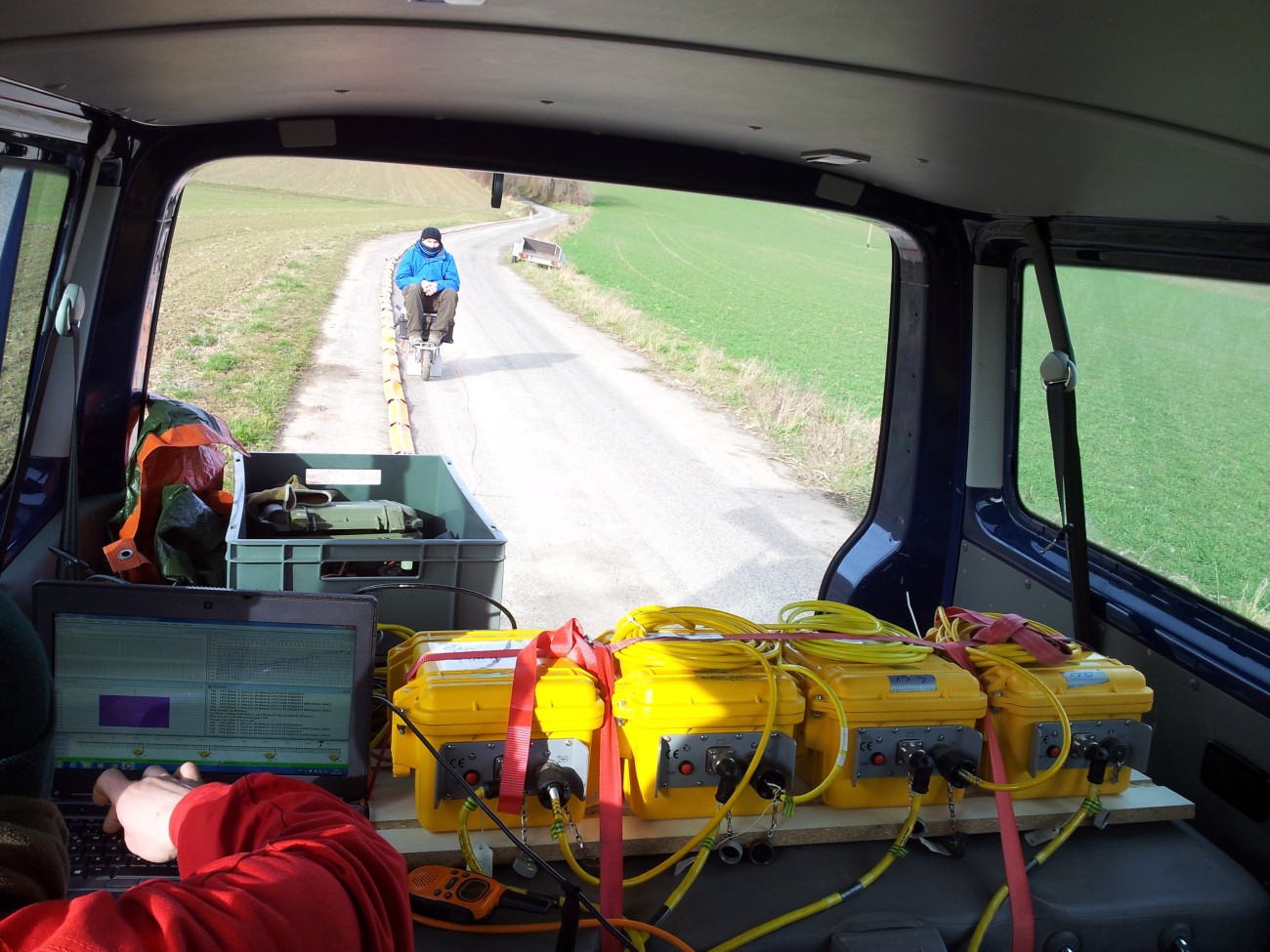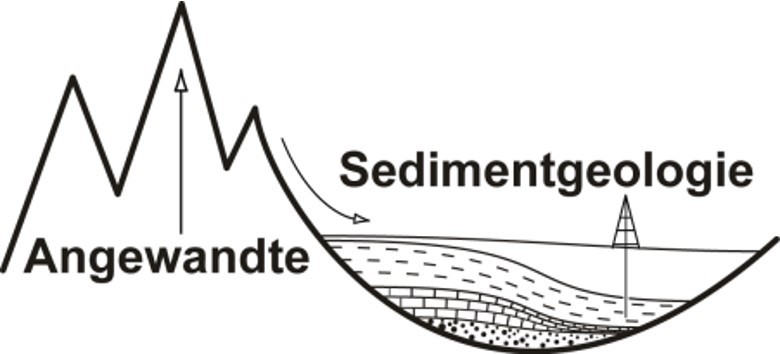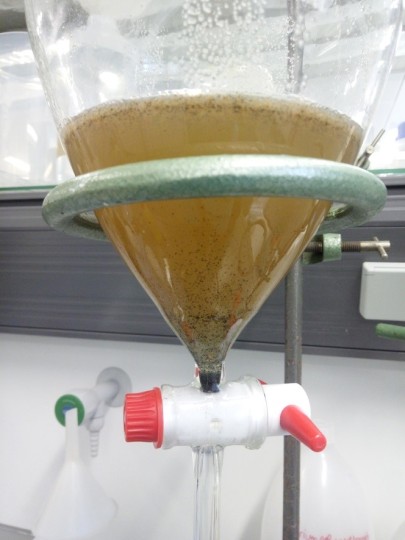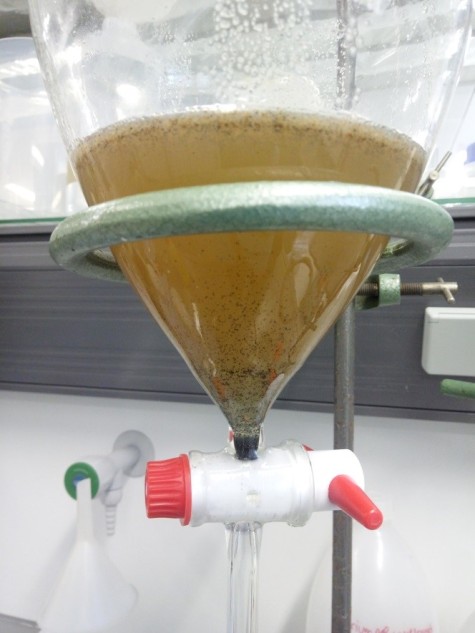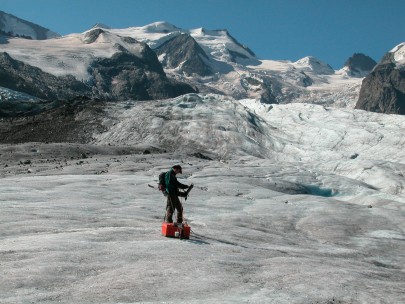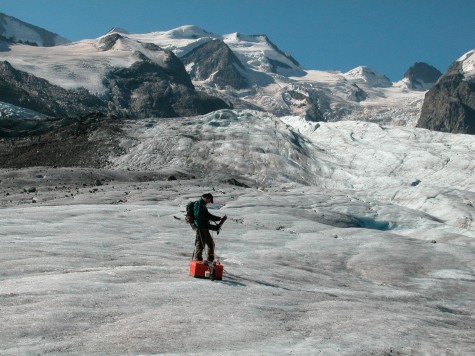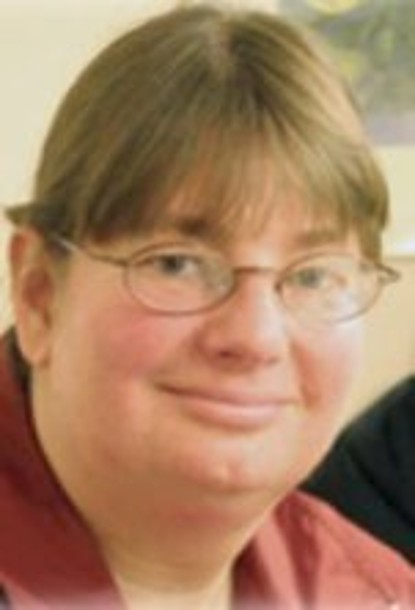The equipment of the Applied sedimentary geology is divided into laboratory and field equipment.
The complete laboratory and field methods of the Hydrothermikum can be found here:
The porosity and permeability of rocks and loose sediments is determined in the porometric laboratory. Both parameters are key properties of reservoir characterization.
The laboratory is equipped with three helium pycnometers and a powder pycnometer to determine porosity. A helium pycnometer can hold samples up to two liters in volume.
The determination of the permeability covers an extremely wide measuring range from 50 D [Darcy] to 1µD. Since the permeability is a tensor, the laboratory is able to measure the permeability of the samples three-dimensionally. This can be done as an apparent permeability with a so-called mini-permeameter, as well as with the intrinsic permeability, which is measured with enclosed samples and different pressure levels. Air is predominantly used as the medium, but liquids can also be used. The laboratory has one mobile and two stationary devices. All devices were developed by the Sedimentology Working Group and built at the IAG.
Technical Director: Reimund Rosmann
Scientific Director: Dr. Jens Hornung
In the acid laboratory u.a. Rock samples are dissolved by means of caustic chemicals to separate certain components of a sample from each other. For example, the framework of palynology is resolved by the refuge of hydrofluoric acid to dissolve the organics, especially spores and pollen, from the silicate constituents. Subsequently, the samples can be prepared by other acids and oxidation processes, which is free of mineral constituents and superfluous organic matter.
Technical Director: Gabriela Schubert
Scientific Director: Jürgen Mutzl
Heavy minerals are high-density minerals (> 2.9 g / cm³) that occur in low frequencies in almost any sediment or sedimentary rock. Common heavy minerals include zircon, rutile, apatite, garnet and epidote. Heavy mineral spectra and contents can be important provenance proxies and provide information about source rocks, climate, recycling and sorting processes.
In our heavy mineral separation lab we use sodium polytungstate (SPT) to extract heavy minerals at a density of 2.9 g/cm³. Usually we use separating funnels, but centrifuging is possible as well. In the dense liquid, the lighter fraction remains at the surface, whereas the denser minerals settle to the bottom. Extracted heavy minerals are prepared as strewn slides using either Meltmount or Canada balsam.
Technical & scientific Director: Dr. Laura Stutenbecker
The microscope is often indispensable in sedimentary geology and is used in sedimentary petrography, heavy mineral analysis, palynology and micropalaeontology. Our microscopy workstation is equipped with an Olympus BX50 polarization microscope (objectives: 10, 40, 60 and 60/oil immersion) with an Olympus SC50 camera and related software; a PELCON automatic stepping stage with point counter and software; and an Olympus SZH stereo microscope (7.5-64x magnification) with camera and software.
Scientific Director heavy mineral analysis: Dr. Laura Stutenbecker
Scientific Director micro paleontology & paleo environment reconstruction: Jürgen Mutzl
The Applied Sedimentology group make use of a 48-channel shear-wave seismics landstreamer. As source, a vibroseis sweep-generator is used, which is able to produce sweeps of different bandwith and duration. This device allows for structural analysis of the subsurface down to aprox. 100-120m with a resolution of 1-2m. Hence, so-called 'architectural elements' can be mapped and displayed in 3-D subsurface models.
Technical & scientific Director: Dr. Jens Hornung
The ground penetrating radar (GPR) is based on the reflection of electromagnetic waves at boundaries in the subsurface. It is the geophysical method with the highest resolution. Depending on the used frequency, structures im cm or dm scale can be detected and displayed – in combination with a very high aquisition speed. Hence, the method is perfect for sedimentology as lithofacies can be analysed in detail. GPR is also used to detect pipes, wires, burried objects and moisture differences.
We are organized in the “Radarforum” – a joint venture of different universities to share knowledge and devices.
Technical & scientific Director: Dr. Jens Hornung
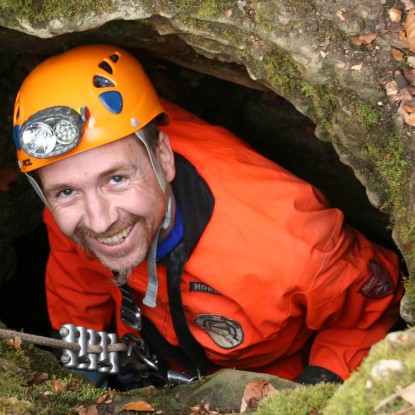
Dr. Jens Hornung
Contact
hornung@geo.tu-...
work +49 6151 16-20632

